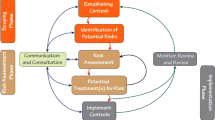Abstract
Fire Company staffing is an important issue. Properly done it ensures sufficiency of hands to perform a variety of tasks required for success on the fire ground. Directly or indirectly staffing affects losses and outcomes and is likely an element in firefighter and civilian safety. While the issue continues as part of a political consensus process, no recent attempts have been documented that suggest a process for local agencies to determine the appropriate company size based on their level of risk assessment and acceptability. This approach provides the practitioner with a model to utilize when considering this issue. It avoids the one-size-fits-all question by demonstrating a methodology for using community demands to determine appropriate fire unit sizing. The resulting process is relatively easily done once the community demands and expectations are identified. The article also considers additional factors other than staffing that can affect the outcome of community testing and that might support or raise questions regarding reliability and validity of the processes.
Similar content being viewed by others
References
International Association of Fire Fighters, Safe Fire Fighter Staf.ng: Crtical Consideration, Washington, D.C. IAFF Dept. of Research and Labor Issues. 1993.
C. Lawrence, Affidavit filed with the Appeal of the California League of Citiesto the NFPA StandardsCouncil, 10 July, 2001.
J. Bryan, and R. Picard, Managing Fire Services, Washington, D.C.: International City Management Association, 1979.
W. Clark, Fire.ghting Principles and Practices, New York: Dunn-Donnelley Publishers, 1973.
W.Y. Kimball, Fire Attack I, Boston, MA.: NFPA, 1966.
W.Y. Kimball, Fire Attack II, Boston, MA.: NFPA, 1966.
J.T. O'Hagan, “Staffing Levels, Part I” through “Staffing Levels, Part VI,” Fire Command. (November 1984–May 1985 in consecutive issues).
D. Drysdale, Introduction to Fire Dynamics, Bury St. Edmunds, Suffolk, UK: Wiley-Interscience Publications, 1985.
National Fire Protection Association, Fire Protection Handbook, 16th ed., Batterymarch Park, Quincy, MA: NFPA, 1987.
National Fire Protection Association, “Annual Report,” 1975, p. 3.
National Fire Protection Association, “Annual Report,” 1991, p. 4.
International Association of Fire Chiefs, Accreditation Methodology Handbook (Draft), Washington, D.C.: IAFC 1992.
J.L. Brudney, FosteringV olunteer Programs in the Public Sector, San Francisco: Josey-Bass Inc. Publishers, 1990.
C. Lawrence, “Using Volunteers,” Unpublished EFO paper, USFA National Fire Academy 1992.
G. Ayers, “Time and Motion Studies,” Fire Chief Magazine, April, 1969.
J. Vincent, Comparative Study of the Manipulative Fire Suppression Skills of Net 6 and Other Companies, Los Angeles: Pepperdine University, 1978.
Auburn, City of. Code of the City of Auburn. “Article II, 9–16 and 9–17,” 1992.
Dr. K. Chelst, “Emergency Response Study,” Auburn, AL, 1990.
Auburn, City of. Auburn 2000. Auburn Planning Commission, 1986.
M. Weber, From Max Weber: Essay on Sociology, Translated and Edited by H.H. Gerth and C. Wright Mills, New York: Oxford University Press, 1946.
F.W. Taylor, The Principles of Scienti.c Management, New York: W.W. Norton and Company, 1947.
H. Simon, Administrative Behavior, 3rd ed., New York: Macmillan Publishers, 1976.
American Fire Sprinkler Association, “Sprinkler Age” (September 1992), 36.
J. Casey, Fire Chief's Handbook, New York: Fire Engineering; Dunn-Donnelley Publishers, 1974.
W. Clark, Fire.ghting Principles and Practices, 2nd ed., Saddle Brook, NJ: Fire Engineering, 1991.
R.J. Coleman, “A Systems Approach to Staf.ng and Manning,” Fire Chief Magazine, August, 1985, pp. 74–77.
Code of Federal Regulations. “1910 CFR 190,” Washington, D.C.: Government Printing Office, 1989.
J. Dalton, “Operation Life Safety Speech,” IAFC Annual Conference, Anaheim, CA, September, 1992.
J.C. Gerard, and A.T. Jacobsen, “Reduced Staf.ng at What Cost?” Fire Service Today, September, 1981, pp. 15–21.
G.A. Glenn, Suppressive Company Staffing Levels and Their Impact on Operations, Executive Fire Officer Research Paper: Emmitsburg, MD, National Fire Academy, 1990.
M.M. Harmon, and R.T. Mayer, Organizational Theory for Public Administration, Glenview, IL: Scott Foresman, 1986.
C. Lawrence, “NFPA Standard 1500 Update,” Health and Safety, Ashland, MA: Fire Department Safety Officers Association, vol. 1, no. 7, 1991, pp. 1–2.
C. Lawrence, “Determining Fire Company Staffing,” Fire Engineering, 1995.
R.C. Morrison, Manning Levels for Engine and Ladder Companies in Small Fire Departments, Executive Fire Officer Research Paper, Emmitsburg, MD: National Fire Academy, 1990.
E. O'sullivan, and G.R. Rassel, Research Methods for Public Administrators, New York: Longman Publishers, 1989.
C.V. Patton, and D.S. Sawicki, Basic Methods of Policy Analysis and Planning, Englewood Cliffs, NJ: Prentice-Hall, 1986.
F.J. Roethlisberger, and W.J. Dickson, Management and the Worker, Cambridge: Harvard University Press, 1939.
H. Simon, The New Science of Management Decision Making, New York: Macmillan, 1977.
C.T. Stroud, Manpower: When is Enough Enough?, Executive Fire Of.cer Research Paper, Emmitsburg, MD: National Fire Academy, 1989.
J.D. Thompson, Organizations in Action, New York: McGraw-Hill, 1967.
United States Fire Administration, America Burning Revisited, USFA, 1987.
B. Vossenaar, “How Cost Effective Can a Fire Department Be?” (Unpublished paper delivered to the International Association of Fire Chiefs First European Meeting), Rotterdam: Holland, 1986.
Author information
Authors and Affiliations
Rights and permissions
About this article
Cite this article
Lawrence, C. Fire Company Staffing Requirements: An Analytic Approach. Fire Technology 37, 199–218 (2001). https://doi.org/10.1023/A:1012470001830
Issue Date:
DOI: https://doi.org/10.1023/A:1012470001830




